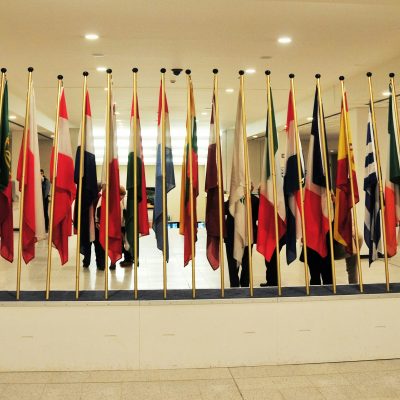For a Europeanisation of the sinews of war

If there is one point on which there is currently consensus in all the articles, declarations and conferences concerning European defence, it is the essential increase in the budgets devoted to the armed forces and their equipment. Few political leaders do not include in their speeches on the security situation in Europe a couplet on the imperative of increasing military spending.
In his new role as Secretary General of NATO, Mark Rutte repeated this mantra in his first speech on 12 December in Brussels (‘’To prevent war, NATO must spend more!’’). And the President of the European Council, Antonio Costa, has just invited the Heads of State and Government to a summit on 3 February dedicated to defence, with an agenda that places the budget issue at the centre (‘’Do we agree to spend more and better together?’’).
The defence industry is naturally supporting this objective. Confirming Cicero’s “Nervi belli pecunia”, nobody disputes the link between defence investment and the ability to protect oneself effectively against external aggression. This equation is all the more well-founded in that it reflects the mobilisation of citizens who agree to allocate a larger proportion of their taxes to their security. So we’re not going to agree with Machiavelli, even though he was probably not entirely wrong to consider that the sinews of war were not money, but good soldiers…
Five observations are nevertheless in order:
- To have a military impact, funding must be spent wisely. Without going all the way back to the Maginot Line, nor citing them, we know of expensive armament programmes that did not produce the military effect for which they were designed…
- The time lag between the decision to invest and the production of the expected equipment can be significant, particularly in the case of heavy, technologically advanced equipment. It generally takes several years, sometimes more than ten, before the industry is in a position to deliver the equipment ordered. We can see, for example, how Chancellor Scholz’s €100 billion «Zeitenwende» announcement in February 2022 is taking a long time to produce effect.
- Conversely, and the Ukrainian army provides some rather convincing examples of this out of necessity, sometimes less expensive and more rapidly available solutions prove to be militarily effective. The advent of digital technology and AI in defence could help to promote these less costly options.
- It is often forgotten that defence appropriations, and in particular those for equipment, are only used after a complex process of planning and negotiation leading to contracts. As the corresponding workload is roughly proportional to the size of the budget to be processed, this administrative management often represents a bottleneck, particularly in countries that do not have a large and competent procurement department. In such cases, it is tempting to buy off-the-shelf equipment at prices already negotiated by the Pentagon through the US Foreign Military Sales mechanism…
- Finally – is it needed remind of this? – in the current context, money is tight. The ability of European Union Member States to increase their national military budgets remains limited by their indebtedness, the economic situation and the fact that public opinion is only moderately sympathetic to this cause.
The political proclamation of a transition to a war economy in no way removes these obstacles. Considering the ultimately small share of the defence effort in the economy, it does not correspond to reality. And it does not call into question the profitability requirements of companies whose nationalisation is not on the agenda.
It is clear, therefore, that “spending more” is not enough to meet the challenge of a more efficient military posture, and that it must go hand in hand with “spending better” and “spending together” as the heads of the European institutions responsible for these issues keep saying. A recent, well-documented report by the European Parliament’s research department, for example, highlights the “cost of non-Europe” in terms of defence, estimating the shortfall in equipment at €11 billion a year. Duplication, lack of competition, uncoordinated purchases outside the EU and administrative shortcomings are the main causes identified.
In these circumstances, it is worth examining how an EU budget intervention in this sector can contribute to “spending better”:
Beyond the conflict in Ukraine, it is already with this objective in mind that the main EU programmes affecting the defence industry have been launched, be it the European Defence Fund or, since 2023, the ASAP, EDIRPA and EDIP undertakings. Each of these initiatives is aiming to encourage inter-state cooperation in R&D, production and procurement.
The question now is whether and to what extent the budget line for defence in the EU’s next multiannual financial framework (2028-2034) will be increased. For the period 2021-2027, the total budget currently stands at around €10 billion.
Ambitious targets have been set: the European Commissioner in charge, Andrius Kubilius, has taken up the figure of €100 billion already put forward by his predecessor Thierry Breton… Let’s leave the negotiations to the Member States: we can safely predict that they will result in a figure of between €10 billion and €100 billion. But the five constraints mentioned above also apply to the European budget, particularly as regards the limited human and financial resources available to take on such a large amount.
So the real debate is about the right balance to be struck between national and European budgets. Because despite the objurgations of some not to reduce national appropriations in order to transfer them to the EU, one cannot hide the fact that the EU is financed by contributions of its Member States. Without going so far as to speak of communicating vessels, it is therefore relevant to measure the overall defence effort of EU countries by aggregating national and EU budgets.
First of all, it is worth pointing out that the increase in national budgets does not particularly encourage cooperation or pooling, since it offers more room for manoeuvre to favour national solutions…
On the other hand, EU funding, by its very nature, imposes cooperation between States by forcing them and companies to form partnerships. By channelling part of the defence effort of the Member States into a common channel to finance actions that are jointly approved and carried out in cooperation, they contribute to defragmenting demand and the EU defence equipment market, with positive repercussions for costs, interoperability and the consolidation of the industry. So it’s hard to argue with the fact that, when allocated to shared objectives and benefiting European companies, EU funding can have a significant impact on “spending better”.
There is a real political choice here. To put it simply: how do we strike the right balance between Scholz’s 100 billion and those of Breton or Kubilius? Or to put it another way: what share should be reserved for the EU in the necessary increase in European military spending that everyone is calling for (particularly under American pressure on NATO…)?
This is a central theme to be debated at the European Council on 3 February, which may then be the subject of proposals in the White Paper on defence currently prepared by the Commission. The response will be an indisputable indicator of a shared will on the part of Europeans to move European defence up a gear.




